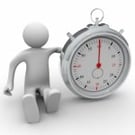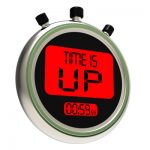I am ready to begin a project specification. The deadline, the architect admits, is unrealistic. But there is no delay allowed. So what is the MOST efficient way to gather project data? Despite years of experience, I still am not sure. Often circumstances and individual personalities will dictate the approach to use. Here is the 9-step approach I used for this project. What would you do?
1. Schedule a Meeting
Fortunately, our client was only a short drive from our office. However, I was already scheduled for other meetings. So the earliest available time to meet was the second day after the notice about the project. "Fine," I said, "Let's meet first thing in the morning." Little did the architect know that I meant 6 AM. We tend to start our days early. We settled on 8:30 instead.
2. Review Available Documents
When setting the meeting schedule, I asked for all the current documents - drawings, product selections, basis of design (BOD) description, and anything else the architect had. I made a point of requesting schedules (door, partition, and finish) and typical wall sections. Architects tend to furnish plans, elevations, and building sections, unless pressed for more because these are what they spent the most time developing to explain the design intent. A BOD was available, but the listed finishes are in the midst of revision. I am still waiting for the door and finish schedules.
3. Develop a Table of Contents
Fortunately we have a spreadsheet master table of contents that allows us to quickly assemble a table of contents for a project by simply filtering the master. The table of contents includes a list of major items in every section to serve as a checklist during the interview meeting.
4. Make a List of Questions
The drawings are missing information. The BOD has numerous inconsistencies and conflicts with the drawings. I highlighted each item that needed clarification. The hand markups, in this case, served as my list of additional questions.
5. Meet and Review
The meeting was really an interrogation (think Spanish Inquisition) rather than a review. I had only a short time, a mere 4 hours, to collect everything I needed - not to start - but to finish the specifications. Had I the training, I would have used the Vulcan mind meld to speed the process and improve the accuracy. I am working on that. Maybe next time.
I conducted the review initially by building systems following a UniFormat arrangement. Architects tend to think better when discussing systems than when discussing individual materials. Then I followed with the table of contents with its checklist in a MasterFormat organization. By then, most questions were answered. So I finished with my list to touch on only the last outstanding items.
6. Follow UP with Notes
Okay the interview was done. The architect promised additional information. So I followed up the meeting sending the architect my notes within the hour. The notes listed the information he promised. So now we both had a tracking measure to be sure each had what was needed to complete. Though the list was submitted, it now falls to me to prod for the remaining answers. Otherwise, in the rush to complete the project, the notes will be forgotten quickly.
7. Mark Up Current Documents
A revelation! The documents I reviewed before the meeting were not the current set. I was promised the current set by the end of the day. The following day I was begging for the update and finally saw it at the end of that day - Friday. Maybe the architect thought he bought some time. But surprise, on Saturday he had an entire set of drawings marked with an additional 126 comments for coordination with the specifications. Some details conflicted directly with the results of the review meeting. Resolving where the insulation occurred in the exterior wall and required type air barrier was imperative.
8. Coordinate, Coordinate, Coordinate
I have the latest documents. The major questions are asked. Now my staff and I must diligently coordinate the answers with the specification development. I know all answers will not be immediately available. That cannot stop the process. When a question remains, we will insert it into the specification as the reminder. Before our final submission, we will extract all the questions and conduct one final interrogation to get an answer, even if the answer is that the question cannot be answered.
9. Deliver Completed Spec
There is little left to do after making corrections from our client's comments. On to the final checking. We make certain that all the embedded questions are removed, editing choices made, formatting updated to our client standards, and header and footer inserted with the project identification. Push the button to print. Yes we still do print hardcopy to check the final result since that is how most project specs are distributed.
Now it's time to take a deep breath and prepare for the next project.


